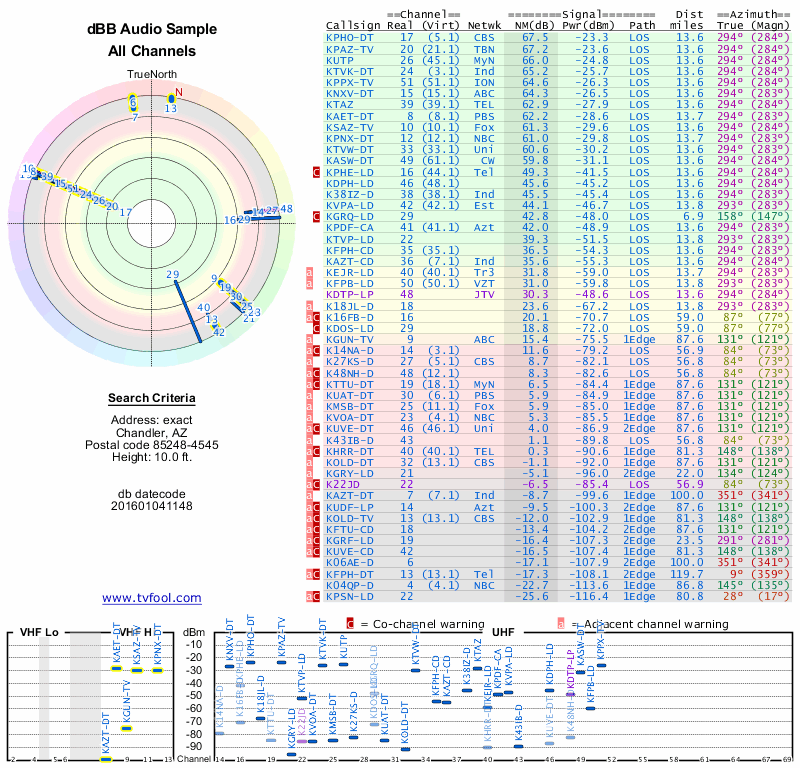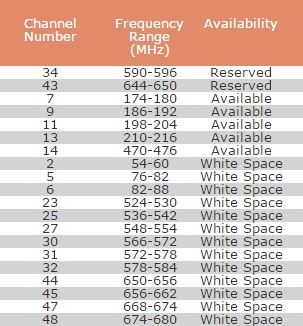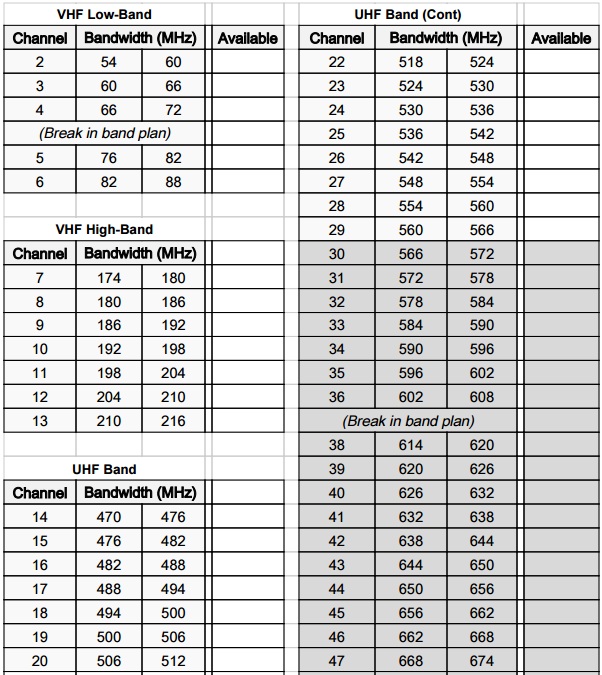I am going through a series on wireless microphones and how selecting the right frequency can make or break the audio coming from it. If you haven’t started at the beginning I would suggest that you read the first post here: Wireless Microphone Frequency Selection – How to make or BREAK your wireless system!!
Today, we are moving forward with the knowledge that there are some REALLY powerful television stations in our areas and that our small wireless transmitters need to have clear frequencies to work correctly. In the last post, I had you go to TV Fool and use their TV Signal Locator, input your address of your venue/church and then print out the report. Here is an example that we are going to be working with today, this is my house in Chandler:
What I love about the TV Fool report is that not only does it show the television stations and estimated receive power, but also shows the location on the compass that it transmitting from. More on this in a different post.
dBm
Before we go too far, the measurement that we are going to be talking about is dBm. dBm is a power ratio of the ‘measured power’ referenced to 1 milliwatt. When the measured power is doubled, a +3dBm gain is seen, when the measured power is cut in half, a -3dBm loss is seen.
Back when I was doing my testing for my DIY Antenna Distribution, I measured the received power at the wireless receiver with the handheld microphone at different distances. Below are those measurements:
- SLX Transmitter @ 10ft: -30.5dBm
- SLX Transmitter @ 25ft: -41.5dBm
- SLX Transmitter @ 50ft: -52dBm
- SLX Transmitter @ 60ft: -56dBm
Now that we know a little bit more about the power density coming out of our wireless microphones, we can take a bit deeper look at the chart from TV Fool. While it is best to find channels that are completely open and free of any TV transmitters, in a more practical use of the TV Fool Chart, we want to keep track of anything above -75dBm on the list. As we can see there are a lot of TV channels open for use with microphones with a minimal amount of interference from TV transmitters under the -75dBm level.
White Spaces
The FCC accommodates unlicensed wireless devices that work in the TV bands, these devices are allowed in channels deemed as ‘white spaces’. The FCC has approved at least two channels of white spaces in each market for use for strictly wireless microphones.
You can find these wireless microphone reserved channels by looking here at a White Space Database. Enter your address, click ‘Wireless Microphone’ and then the white spaces dedicated to wireless microphones will show as being ‘Reserved’. These two channels will be empty of TV transmitters and are a perfect spot to start with for your wireless microphone selection.
Additionally, take a look at the channels listed as White Space. These will correspond with the TV channels listed on the TV Fool report that have no stations with a higher measurement power of -80dBm.
Today’s Assignment
Print out this form: LINK.
Once you have printed that out, you will see that there are the TV channels on the first column. Reference the White Space Database and mark out those channels available with a ‘Y’ or an ‘X’. The two channels listed as ‘reserved’ mark with ‘YY’ or ‘XX’. Now go to the TV Fool report and start at the top of the right column. Put a horizontal line through the boxes where a TV transmitter has a power of -75dBm or higher.
After you go through the list, you will find that you have a few blank spaces. These blank spaces are going to be available channels for your wireless microphones to be placed as well.
FCC Auction 1001 “the 600MHz Auction”
On April 29th, 2016, the FCC announced a clearing of spectrum to be reallocated away from over-the-air television and auctioned off for use by other companies such as mobile phone providers. There is a lot of misguided information out there, so I wanted to really set you straight with the facts as it WILL impact your use of wireless microphones in the future.
The FCC Auction 1001 will affect frequencies between 566MHz to 698MHz. Below is a chart of how this will be reallocated:
As we can see, the spectrum from 470MHz to 566MHz will be untouched however all of the 600MHz band will be reallocated. This is a pretty large reduction of available frequencies for use with our wireless devices. Now, remember this is what is proposed and this will affect different markets in various ways, but if you have a wireless microphone in the 566MHz-698MHz expect to eventually lose the ability to use that device.
The FCC has allotted a 39-month roll-out period for transition, during this time they have allowed wireless microphone “users could continue to access spectrum repurposed for wireless services during the post-auction transition period.” The main stipulation is that “wireless microphone users may continue to access the re-purposed 600 MHz band during the post-auction period provided that they do not cause harmful interference to any 600 MHz band licensee’s operation.”
You can read more about how this will affect the wireless microphone users here in this FCC Article.
The transition period will place the last date we can effectively use the 566MHz-698MHz spectrum into 2019. This is why the printout for available wireless spectrum in the 566MHz and up is grey as later in 2019 we will no longer have access to these frequencies.
Next week, we will go into more detail about how we can verify our work with some inexpensive but very practical products!



